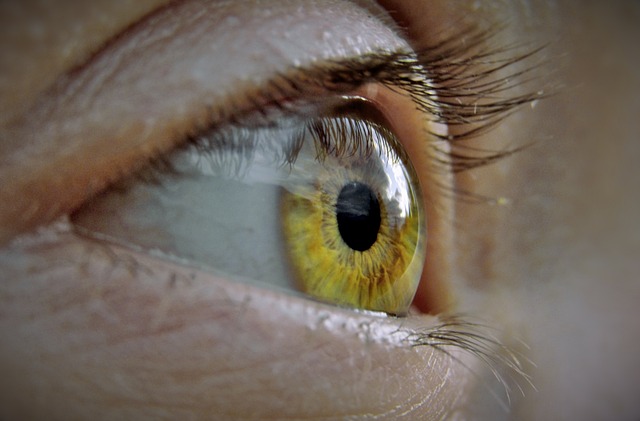Natural Treatments for Dry Eye Disease

Dry eye disease is a common eye condition that often worsens with age. In general, symptoms of dry eye disease include redness, tearing, blurred vision and foreign body sensation—the sensation that something is stuck in the eye when it’s not. Dry eye disease occurs more often in women over age 50 and can be caused or exacerbated by autoimmune disease, contact lenses, medications and certain medical procedures, including laser eye surgery (LASIK). Estimates suggest that around 5% of the adult population struggles with dry eye disease (Hakim 2022).
As a condition, dry eye disease is caused by changes to the quality of tears and inflammation on the surface of the eye. Anyone with suspected dry eye disease should work with an eye doctor to confirm the diagnosis. Standard treatments often include artificial tears, eyelid hygiene, eye plugs for the lacrimal glands to decrease eye-tear drainage and topical anti-inflammatories (Messmer 2015). While these treatments may be helpful, some of them can come with side effects or may not provide adequate relief. As such, it’s worth looking at alternative treatments that may also help to decrease dry eye symptoms.
Essential Fatty Acids and Dry Eye Disease
Probably the most well studied natural approach for dry eye disease is the addition of essential fatty acids. While omega-3 fatty acids have the most research, some omega-6 and omega-7 fatty acids may also be helpful.
Omega-3 Fatty Acids
An initial 2006 pilot study on dry eye disease from France investigated supplementation of essential fatty acids and found trends towards benefits (Creuzot 2006). Based on their results, they recommended additional research. In 2011, a small double-blind clinical trial found that omega-3 supplementation was able to eliminate symptoms in 70% of patients as compared to just 37% with placebo (Wojtowicz 2011). One of the most recent studies was on patients who had dry eye symptoms in response to computer screen use (Bhargava 2023). They also found improvements in symptoms with omega-3 fatty acid supplementation.
Omega-6 Fatty Acids
While most omega-6 fatty acids are thought to be pro-inflammatory, there are exceptions. Gamma-linolenic acid (GLA) is an omega-6 fatty acid with anti-inflammatory properties. While not as well studied as omega-3 fatty acids, some of the research suggests that GLA may be beneficial for dry eyes.
A small study in patients with dry eye disease due to an autoimmune condition found both symptomatic improvements and improvements upon eye exam with GLA (Aragona 2005). In patients with dry eye symptoms due to contact lens use, oral GLA was also found to improve symptoms and contact lens comfort (Kokke 2008).
Worth noting is that many of the studies on essential fatty acids used a combination of both omega-3 and omega-6 to achieve benefits. A meta-analysis of the research concluded that omega-3 fatty acids have the strongest evidence and should be included as a component of any essential fatty acid treatment for dry eye disease (Chi 2019). As such, GLA is likely most effective when combined with omega-3s.
Sea Buckthorn Oil and Omega-7 Fatty Acids

While the research is not as fleshed out, there are suggestions that a unique fatty acid found in sea buckthorn oil may also be useful for dry eye disease. As a source of fatty acids, sea buckthorn contains omega-3, omega-6 and omega-7 fatty acids, among others. A study from 2010 found that sea buckthorn oil improved tear quality and reduced dry eye symptoms (Larmo 2010).
In 2011, a separate study also found benefits, but concluded that sea buckthorn had anti-inflammatory properties and wasn’t directly increasing the levels of essential fatty acids found in tears (Järvinen 2011). A study in rats with induced dry eyes found that the administration of just omega-7 fatty acids from sea buckthorn was enough to restore normal tear secretion (Nakamura 2017).
Vitamins and Minerals for Dry Eye Disease
Vitamin D
Low vitamin D levels have been linked to the development of numerous eye diseases including dry eye disease (Chan 2022). As a treatment, vitamin D has anti-inflammatory and immune modulating properties. A review of the studies using vitamin D to treat dry eye disease found that vitamin D improved tear production and quality, while decreasing inflammation and improving the eye surface (Chen 2024). The authors note that vitamin D may be an effective adjunctive treatment for dry eyes, although the most appropriate dosing still needs to be worked out.
B Vitamins
A study from 2022 explored the benefits of vitamin B1 and vitamin B12 for dry eye disease (Ren 2022). Both vitamin B1 and B12 are known to help support nerve function. In dry eye disease, nerves in the eye can become damaged. In patients given oral B1 and B12 combined with lubricating eye drops, symptoms were more significantly improved as were parameters of nerve health and eye surface inflammation as compared to patients given just eye drops alone.
Probiotics
Probiotics are beneficial bacteria or yeast that are taken orally to support gastrointestinal health. Research suggests that imbalanced gastrointestinal flora may cause or contribute to some cases of dry eye disease (Watane 2022).
One study gave patients with dry eye disease probiotics combined with the prebiotic fructooligosaccharide (FOS) (Chisari 2017). Patients given the probiotic supplement had resolution of their symptoms, whereas patients given lubricating eye drops did not. A similar study by the same research group using a probiotic mixture of the yeast Saccharomyces cerevisiae boulardii and probiotic Enterococcus faecium found a significant reduction in symptoms of dry eye disease with the combination (Chisari 2017)
However, a study from 2024 gave either a live probiotic formula of Latilactobacillus sakei orally or a dead version used as eye drops (Heydari 2024). The oral probiotic had no benefits for dry eye disease, whereas the topical provided significant improvements. The research highlights how not all probiotics are the same. Different strains of bacteria can have very different benefits. With the minimal research available, if a patient wanted to try probiotic treatment, it would be worth trying several different products with different bacterial strains to see which one was most helpful for symptoms.
Conclusion
Dry eye disease is a common condition that can significantly decrease a person’s quality of life. For individuals struggling with dry eye disease, a number of natural treatments are worth considering, including essential fatty acids, vitamin D, B vitamins and probiotics. These treatments may help to reduce symptoms on their own or when combined with standard therapies.



